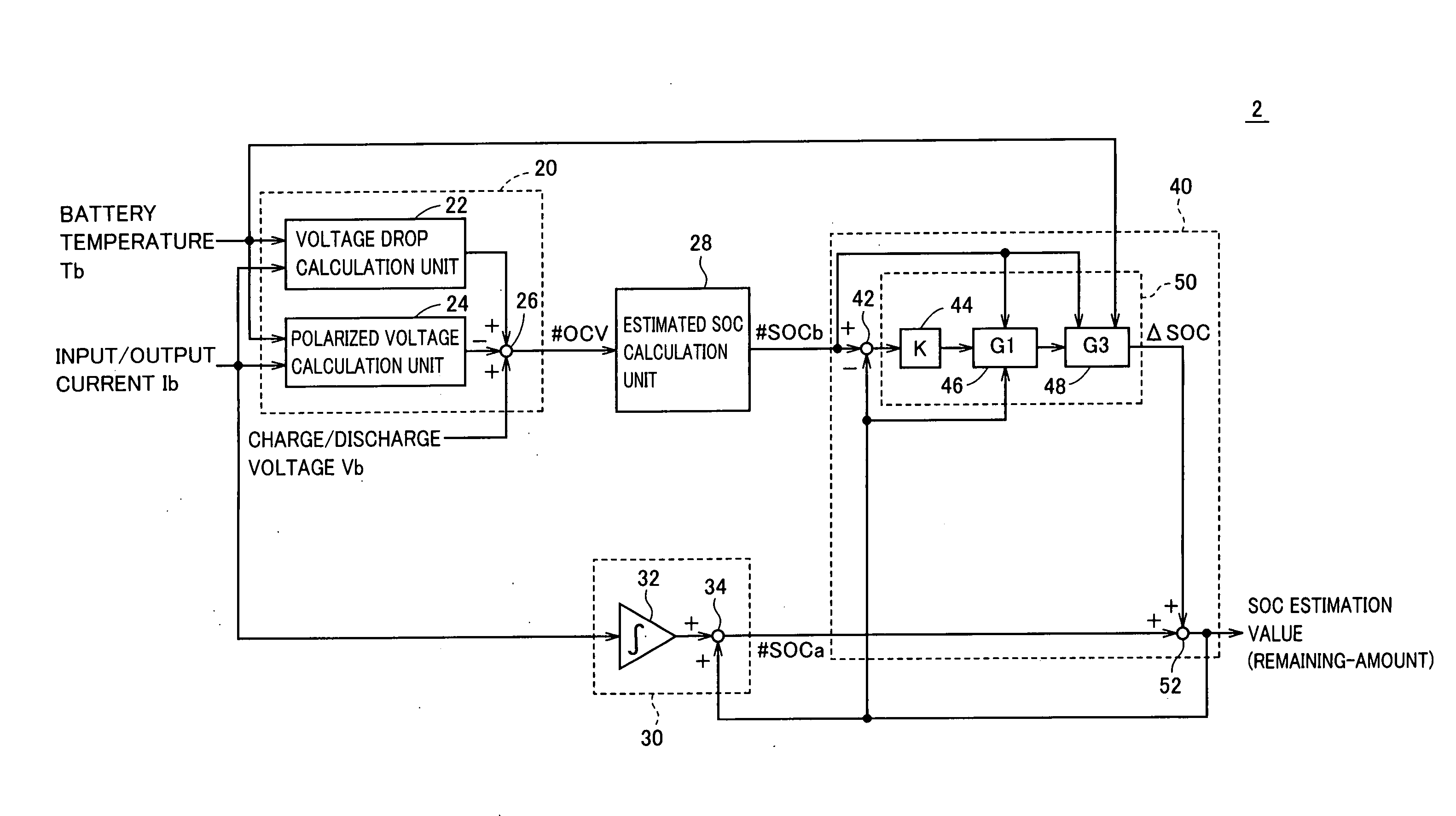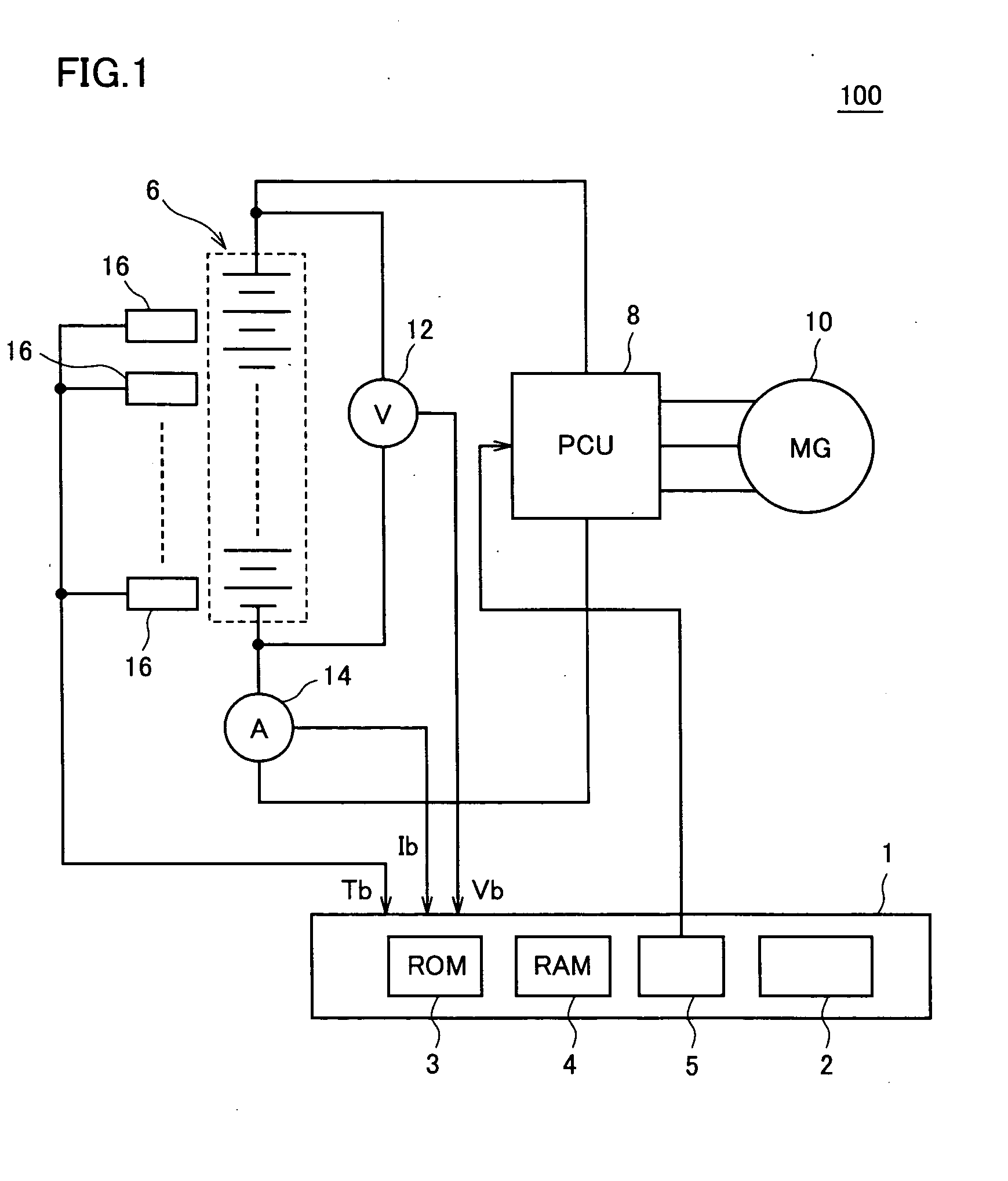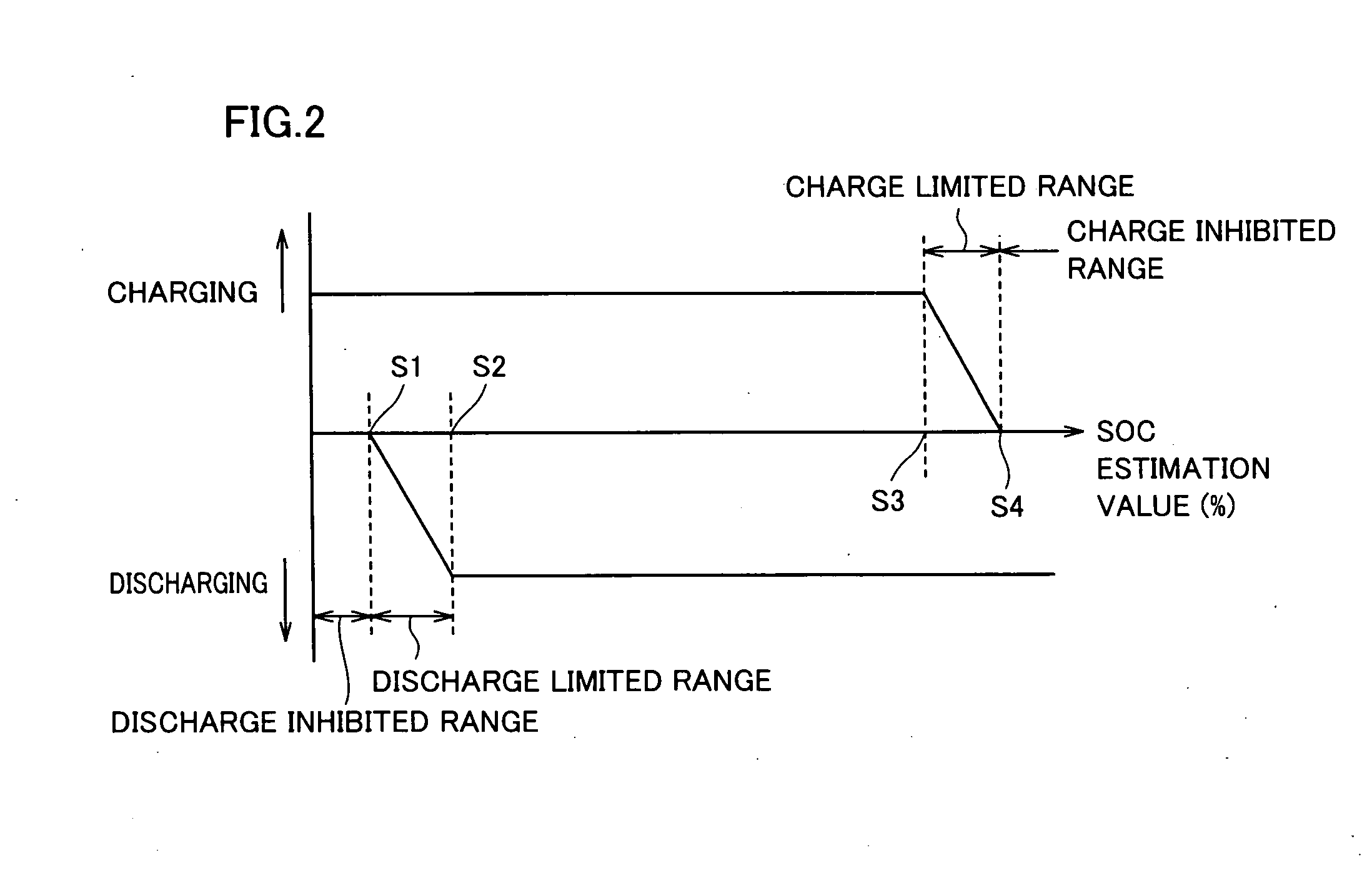Remaining-Amount Estimation Device and Method For Secondary Battery
a secondary battery and remaining amount technology, applied in measurement devices, instruments, transportation and packaging, etc., can solve the problems of reducing capacity, affecting the accuracy of estimation, so as to avoid excessive charging and excessive discharging, the effect of high accuracy
- Summary
- Abstract
- Description
- Claims
- Application Information
AI Technical Summary
Benefits of technology
Problems solved by technology
Method used
Image
Examples
first embodiment
[0048]Referring to FIG. 1, a vehicle 100 includes a secondary battery 6, a PCU (Power Control Unit) 8, a motor generator (MG) 10, an ECU 1, a voltage measurement unit 12, a current measurement unit 14, and a temperature measurement unit 16. Vehicle 100 is a hybrid vehicle which runs by at least one of the driving force from motor generator 10 and the driving force from the engine which is not shown. Instead of a hybrid vehicle, the vehicle may be a fuel vehicle incorporating a fuel cell or an electric vehicle which runs only using the driving force from the motor generator.
[0049]Secondary battery 6 is a battery set having a configuration in which a plurality of battery modules each consisting of a plurality of integrated battery cells are connected in series and, by way of example, includes a lithium ion battery, a nickel metal hydride battery, and the like. Secondary battery 6 is configured to be charged and discharged by means of PCU 8.
[0050]PCU 8 converts DC (Direct Current) powe...
second embodiment
[0117]In the above-described first embodiment of the present invention, the configuration in which correction value ΔSOC is calculated by the correction gains selected based on the SOC estimation value (last calculated value), the estimated SOC (#SOCb) and the battery temperature, respectively, has been described. In the second embodiment of the present invention, the configuration in which correction value ΔSOC is calculated by the correction gains selected based on the input / output current, the estimated SOC (#SOCb) and the battery temperature, respectively, will be described.
[0118]Referring to FIG. 9, an SOC estimation unit 2A according to the second embodiment of the present invention is equivalent to SOC estimation unit 2 according to the first embodiment of the present invention shown in FIG. 3 except that it has an SOC calculation unit 40A in place of SOC calculation unit 40, to which SOC calculation unit 40A is equivalent except that it has a correction value calculation uni...
third embodiment
[0144]In the above-described first and second embodiments of the present invention, the configuration in which the correction value is calculated by the correction gains selected based on the SOC estimation value (last calculated value), the estimated SOC (#SOCb) and the battery temperature, and the configuration in which the correction value is calculated by the correction gains selected based on the input / output current, the estimated SOC (#SOCb) and the battery temperature have been described, respectively. In the third embodiment of the present invention, the configuration in which the correction value is calculated by all the above correction gains will be described.
[0145]Referring to FIG. 12, an SOC estimation unit 2B according to the third embodiment of the present invention is equivalent to SOC estimation unit 2 according to the first embodiment of the present invention shown in FIG. 3 except that it has an SOC calculation unit 40B in place of SOC calculation unit 40, to whi...
PUM
 Login to View More
Login to View More Abstract
Description
Claims
Application Information
 Login to View More
Login to View More - R&D
- Intellectual Property
- Life Sciences
- Materials
- Tech Scout
- Unparalleled Data Quality
- Higher Quality Content
- 60% Fewer Hallucinations
Browse by: Latest US Patents, China's latest patents, Technical Efficacy Thesaurus, Application Domain, Technology Topic, Popular Technical Reports.
© 2025 PatSnap. All rights reserved.Legal|Privacy policy|Modern Slavery Act Transparency Statement|Sitemap|About US| Contact US: help@patsnap.com



